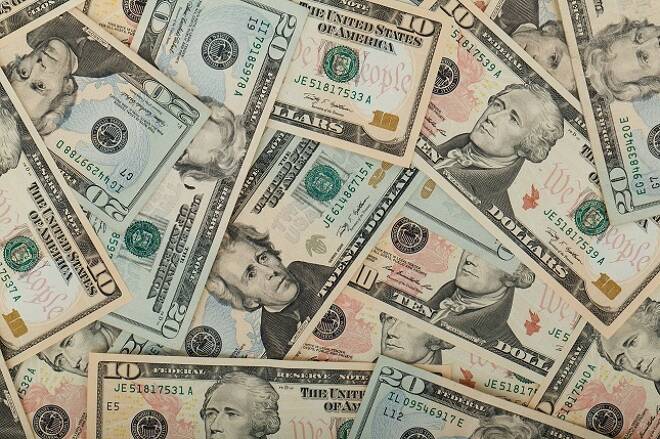Advertisement
Advertisement
U.S. Dollar Retreats from 11-Month High as Cooler Heads Prevail Over Tariffs
By:
U.S. Commerce Secretary Wilbur Ross tried to calm nerves by explaining President Trump’s reasoning behind the tariffs. He said the White House is attempting to reach a deal on greater American access to Chinese markets and narrow its trade surplus with the United States.
The U.S. Dollar surged to an 11-month high against a basket of major currencies early Monday before finishing only slightly higher for the session.
The Greenback continued to be underpinned by worries over the possibility of additional tariffs. However, gains were limited after China cut the Yuan’s midpoint rate at 6.4586 per dollar, the weakest level since January 12 and much stronger than market models had suggested. This move stabilized investor sentiment by signaling China’s tolerance of a stronger Yuan.
In other news, U.S. Commerce Secretary Wilbur Ross tried to calm nerves by explaining President Trump’s reasoning behind the tariffs. He said the White House is attempting to reach a deal on greater American access to Chinese markets and narrow its trade surplus with the United States.
Speaking at an economic outlook conference in Sintra, Portugal, U.S. Federal Reserve President Jerome Powell had this to say about the risks associated with tariffs, “In principle changes in trade policy could cause us to have to question the outlook.”
Fed Talk and U.S. Economic Data
In prepared remarks before a central banking conference in Sintra, Portugal, Powell offered nothing new about U.S. monetary policy.
He reiterated that the U.S. jobs market does not appear overly tight and the Federal Reserve should continue with a gradual pace of interest rate rises amid a strong economy to balance its employment and inflation goals.
Powell also cautioned central banks against trying to run an excessively hot labor market for too long in case it undermines their credibility on low and stable inflation.
In other news, existing home sales unexpectedly fell in May as an acute shortage of properties on the market pushed house prices to a record high.
The National Association of Realtors said on Wednesday that existing home sales slipped 0.4 percent to a seasonally adjusted annual rate of 5.43 million units last month. Economists were looking for an increase of 5.52 million units or a rate of 1.5 percent.
Crude Oil
U.S. West Texas Intermediate crude oil and international-benchmark Brent crude oil settled sharply higher as investors continued to position themselves ahead of a key meeting of OPEC producers that may decide to increase global output. Traders primarily ignored the weekly U.S. Energy Information Administration’s inventories report that showed mixed results.
Volatility was the theme on Wednesday as bearish traders continue to support the notion that Saudi Arabia and Russia would push for at least a 1 million barrel per day increase in production, while bullish investors priced in opposition to the increase by Iran, Iraq and Venezuela.
In other news, the EIA reported that crude inventories fell more than expected, however, the government report also showed a surprise jump in gasoline stockpiles.
About the Author
James Hyerczykauthor
James is a Florida-based technical analyst, market researcher, educator and trader with 35+ years of experience. He is an expert in the area of patterns, price and time analysis as it applies to futures, Forex, and stocks.
Did you find this article useful?
Latest news and analysis
Advertisement
